| Who is Annalisa Cima? Annalisa was born in Milan. Her family, owners of a paper mill, were originally from Lecco. Her paternal grandmother’s family was originally from the French-Piedmont region and her maternal grandmother was of Austrian-Jewish ancestry. In fact, Alice Anna Schlesinger, Annalisa’s maternal grandmother, was a member of one of the most illustrious families that fled from Vienna during the Nazi era. Francesco Cima, Annalisa’s beloved grandfather, was an enlighted entrepreneur and a Gobettian anti-fascist who was forced to seek asylum in Switzerland during the war. He was an intelligent and educated man, a sort of understated patron of the arts, a rarity. It is in referring to the grandfather she always adored that Annalisa immediately begins her autobiography, focusing on the aspirations and passions felt during her youth. I think we should let her tell us: “I have spent too many years alone to be objective in describing myself”,says Annalisa. “Therefore, I will try to remember what my grandfather used to tell me. He would say that it is difficult to understand great souls, because they hide, although one can usually figure them out by paying attention to details. I have never been interested in being famous, and I have always tried to hide, but I don’t know if this is enough to be a great soul; what I do know is that it is important to me to do good and that I always keep in mind that everything passes, everything fades away, only deep feelings, caused by heartfelt emotions, don’t end. They change, but don’t die. I have always sought the friendship of those who are similar to me, who love beauty, so that I wouldn’t lose my inborn sense of aesthetics and ethics. That’s what my grandfather used to say about me. I was very lucky to grow up with my grandparents, surrounded by extraordinary people: my grandparents, so peaceful and good-natured, Angelica, my generous and motivated teacher, my beloved Colombina, our cook, who saw the birth of my father and died in our house; Giuseppe, our driver, and all the other household help. I was born in Milan, in Via Cosimo del Fante, but I spent my childhood in a true garden of Eden: in my grandparents’ house, in the country, in San Giovanni Bianco. It was surrounded by a huge park with a small lake, local trees, a small grotto, tree-lined paths, a fountain, a small stable with a real pony, squirrels and turtle-doves which inhabited the beautiful gardens. Living in this happy environment made the outside world seem dangerous. I still live in a dream, one that has not been spoiled by gossip and lies. “Yes, the world has always scared me, because of its inconsistency and aggressiveness, because life is too short and full of too many problems that need to be solved and on which we could spend all our time. As a child, when I was asked what I wanted to be, I would answer: I want to become a philosopher, a saint or a poet. The elderly, detached and peaceful, have always been my favourite interlocutors. Materialism and careerism, which I often found in my peers, persuaded me to distance myself from them. It takes a lot of courage to make choices where one must give up things; you are often left with yourself, but solitude can be beautiful, when one is with a book, a real friend or one’s own thoughts. “Hypotheses of love” was the title of one of my poetry books, with a preface by Marisa Bulgheroni; maybe that’s the way it is: in my opinion, life is an endless hypothesis of love, in friendship, passion, memories or desires. What’s the use of intelligence, which my grandfather often called upon? To joyously live memories and know more, to have a fulfilling present and a project-filled future. Lastly, I expect a lot from others because I expect a lot from myself”. Friends like Vanni Scheiwiller are well aware of this. He met Annalisa in a rather accidental manner. In 1967, be went into the Galleria Cavour, in Milan, to take a look at an exhibit by a well-known female painter. He was attracted by the lunar, fiery landscapes and most certainly by the artist’s photograph, printed in the catalog. The painter was Annalisa Cima; she was surrounded by a court of friends, painters and critics. Scheiwiller writes: “There was an adolescent-like quality about Annalisa. She was mischievous and witty, her eyes had a faint sadness which revealed that she had suffered. In short, she was a blend of melancholy and cheerfulness. Maybe that’s why Montale had called her “bitter-sweet” in a poem he dedicated to her in 1973. Back then, my relationship with Ungaretti was slightly strained (he was upset about the epigram written by my friend Giacomo Noventa), so I decided to appease him by sending Annalisa Cima as a “messenger”. Not only did Ungaretti reconcile with me but he also allowed Annalisa to dedicate a booklet to him, ‘a magic eye’, entitled Allegria di Ungaretti. He also gave her three unpublished poems to be included in the booklet. The photos had been taken by Ugo Mulas in Venice. I realized that Annalisa Cima was capable of turning an ‘irritable’ man like Ungaretti into a benevolent grandfather, initiating friendships with others besides Palazzeschi and Montale, who were already open to friendship. Annalisa Cima had qualities which transcended normal standards. “The sign / which transcends humans” - writes Montale in his Diario postumo. In thirty years we had many terrible arguments, but our differences never damaged our friendship. We both dream of another ‘golden age’ for the arts and we live our lives searching for those who share our objective: As a publisher, that’s all I know how to do, and Annalisa Cima does it, too, first through painting and then through poetry. We have built a hermitage of true friends, where one can find refuge from noise and high society, always in search of otium literarium, which is actually “vita activa”, full of anxiety, problems and disappointments. This in the key to reading the long friendship between a poetess with a difficult character, who always speaks her mind and a publisher who is as assertive and strong-willed as she is. ‘Friends for life’, as Palazzeschi would have it, or ‘everlasting kids, always ready to joke around’, as Umberto Eco told me on the phone the other day, joining in”. As I have already said, it was Scheiwiller who had Montale and Annalisa Cima meet in 1968. One morning in 1969, Annalisa went to Montale to pay him a visit and, as usual, she sat facing the De Chirico hanging on the wall. She had brought him a gift, a copy of Terzo modo, her first book of poems published by Vanni Scheiwiller. The following day, when she returned, Montale said to her: “Read this and tell me if you agree”. It was such a laudatory article about Terzo modo that Annalisa was breathless. Montale said that he wanted to have it published in the “Corriere della Sera”. Annalisa asked him to let her stand on her own two feet and added that, however grateful she was, she wanted to keep her poetry to herself; that would be their secret. From that day on, Montale was sure that theirs was a disinterested relationship based on equality. “He would often talk to me about my poems, saying that they were disquieting but clear. His favorite poems were the last four in my booklet: ‘The Form’, ‘Conversation’, ‘Third Way’, ‘Objection to the System’, the same poems that Marianne Moore also liked. I told him that “Objection to the System” had been translated by Allen Ginsberg, so he wanted to read the English translation. “Although he agreed not to publish his article in the “Corriere”, he insisted on presenting my book, with Scheiwiller and myself, at the Cortina bookstore in Milan”. There are still some aspects to Annalisa’s life and personality, which help define her, but that haven’t yet been explored in her “Self-portrait”, especially concerning her childhood, upbringing and the unique experience of her illness. I have already mentioned that Annalisa was born to a very wealthy family who owned a paper mill. Titta, her father, originally from Lecco, was Francesco Cima and Elisa Theresa De Thoma Mauri’s only child. Her maternal grandmother’s family was from Piedmont. The De Thomas, of French ancestry, were originally from Turin but had moved to Lecco. Annalisa’s mother, Ileana, was born in Vienna and was the only child of Alice Anna Schlesinger, a member of one of the most prestigious families of the Jewish Gotha in Vienna. Alice Schlesinger’s father was the owner of the Schlesinger Bank in Vienna. He did not want his daughter to marry a Gentile, so for a long time he opposed her marriage to Annalisa’s grandfather, Nicola Gottfried, count of Pappenheim, adopted by his uncle Bantia. During the crucial years of the Holocaust, Annalisa’s grandmother sought asylum in Switzerland, her sister in Canada; her brother was deported to Auschwitz. Her family misfortunes and the economic ruin of the Schlesingers had made her grandmother very sad. She found some consolation in playing the piano; she had been an outstanding concert pianist before suffering from pulmonary consumption. Unfortunately, Annalisa’s parents’ marriage was short-lived. Once they had separated, Annalisa and her brother went to live with their paternal grandparents. In 1941 (Annalisa was then four months old), the Cimas left Milan and moved to San Giovanni Bianco and to Switzerland. The moves influenced Annalisa’s future. San Giovanni Bianco and Switzerland are the places where she developed her character and they affected her cultural upbringing. She started her studies, privately, at four. It is here that her grandparents, Angelica, her tutor, and others play an important role in her life. At eight and a half years old, Annalisa returned to Milan and started school. Between 1954 and 1955 she deeply admired the famous Doctor (and musicologist) Albert Schweitzer, the founder of a leper hospital in Africa. She dreamed of becoming a doctor and devoting her life to those who are suffering. In 1982, Annalisa met Rita Levi Montalcini. After Annalisa told her of her dreams the two became friends. In fact, the scientist had always wanted to follow Dr. Schweitzer when she was a girl too. In 1956 Annalisa developed tubercolosis. The disease forced her to significantly change her adolescent life and became a key element in Annalisa’s personality. It left its mark on her and would reappear during the critical moments of her life. “When I got sick - she says - my friends were mostly the elderly, who led as quiet a life as I did. I had to go for walks, while my peers participated in sports and had more active lives. Giving up sports was no major sacrifice; I had never really liked them. However, my illness totally changed my relationship with people and life in general. For example in Switzerland, where I lived for quite some time, I met Marc Slonim, the historian, and Alberto Sartoris, the great architect. became my friends, even though they were much older than I was, because we shared a similar outlook on life. I spent the first year and a half in the mountains, where I recovered by taking medicines were prescribed at the time. Few people were close to me; the younger ones disappeared. I understood how inhuman the world and people could be; once you leave the mechanisms of society, you are quickly forgotten. Only true friends stick by you. At fifteen, I experienced the devastation of old age. I realized that when one is old it is as if he or she was sick. My illness made me feel as if I were different, I felt as if people were afraid of being around me. Music, painting and writing were not only a necessity for me, but they were also a refuge. Books would never betray me. Like Montaigne, I would caress them on the shelves of my library and bring suitcases full of them to the mountains. The illness helped me, it increased the sense of isolation that until then had not surfaced. During those years, I began painting under Pietro Servalli’s guidance. Although both Gregorio Sciltian, the painter, and Marco Valsecchi, the critic, admired my figurative paintings, I soon went on to abstract art.In 1964, I exhibited at the Flaviana Gallery in Locarno and at the Kasper Gallery in Lausanne. Approximately twenty more exhibits followed, among them one at the Cavallino Gallery in Venice in 1965, one in Brussels and one in Paris at the Galerie Riquelme in 1967. In Milan, at the Cavour Art Gallery, I met Scheiwiller, who in 1968 prepared a monograph for the series ‘Il Quadrato’. It was a booklet ‘All’Insegna del Pesce d’Oro’, prefaced by Alberto Sartoris, the critic and architect. More exhibits followed in America, Brazil and Japan. While I was preparing a series of ten exhibits in the States with Alan Solomon, Giulio Carlo Argan was in Rome writing for a monography to be published in the Fratelli Pozzo Art Editions". |
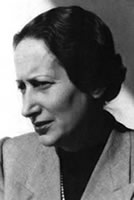 Alice Anna Schlesinger 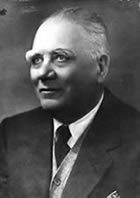 Francesco Cima, il nonno prediletto da Annalisa 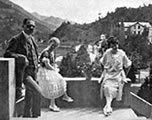 Il nonno Francesco Cima, la nonna Elisa e la zia Maria a San Giovanni Bianco, 1922 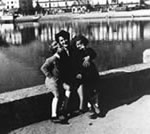 L'istitutrice Angelica tra Francesco alla sua sinistra e Annalisa 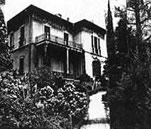 La villa di San Giovanni Bianco  Marisa Bulgheroni, Cesare Segre, Annalisa Cima, Silvio Riolfo e Gianna Paltenghi alla presentazione di Ipotesid'amore a Lugano  Da sinistra : Giuseppe Caldara (l'autista), Giovanni Battista Cima (padre di Annalisa), Lisetta Steffanoni Pandini (cugina di Giovanni Battista) 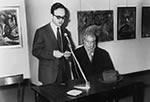 Vanni Scheiwiller ed Eugenio Montale, Libreria Cavour di Milano, presentazione di Terzo Modo di Annalisa Cima, 1996 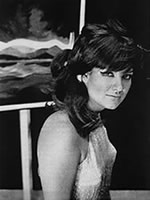 Annalisa Cima alla Galleria Kasper, Lausanne, 1964  Giuseppe Ungaretti e Annalisa Cima. Ungaretti presenterà all'Università di Harvard il volumetto di A.Cima Allegira di Ungaretti  Aldo Palazzeschi e Annalisa Cima a Roma, 1969 (foto di Alberto Lattuada)  Annalisa Cima e Marianne Moore a New York, 1968 (foto di Ugo Mulas) 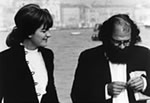 Annalisa Cima e Allen Gisberg a Venezia, 1969 (foto di Franco Bottino) 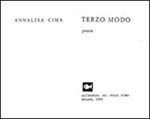  Eugenio Montale e Annalisa Cima alla Libreria Cavour di Milano, 1969 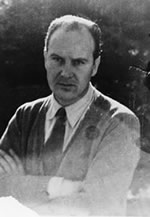 Giovanni Battista Cima (detto Titta) padre di Annalisa 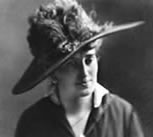 Elisa Teresa de Thoma Cima, nonna paterna di Annalisa 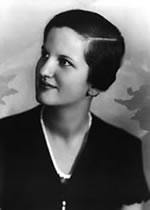 Ileana, madre di Annalisa  Annalisa Cima e Rita Levi Montalcini nella casa della Montalcini a Roma, 1996 (foto di Rino Bianchi) 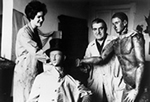 Annalisa Cima e Gregorio Sciltian a Milano nello studio del pittore, 1959 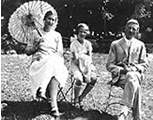 Alice Anna Schlesinger nel giardino della villa di Graz in compagnia della figlia Ileana e del marito Nicola Gottfried conte di Pappenheim |
